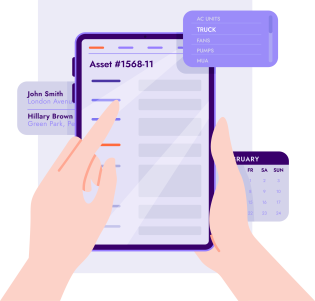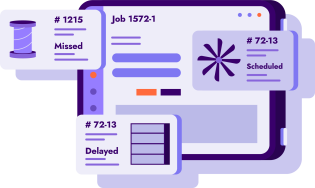Unleashing Efficiency with HVAC Dispatching: Strategies for Success

Imagine a scorching summer day when the air conditioner suddenly stops working, or a freezing winter night when the heater refuses to turn on. In these moments of discomfort, the importance of efficient HVAC dispatching becomes abundantly clear. HVAC dispatching is the backbone of any successful heating, ventilation, and air conditioning service, ensuring timely responses to emergencies and scheduled maintenance alike.
By seamlessly coordinating technicians, resources, and communication, optimized dispatching not only resolves HVAC issues promptly but also brings a myriad of benefits to both customers and service providers. Let’s delve into the world of HVAC dispatching and explore the transformative impact it has on the world of HVAC operations.
HVAC dispatching refers to the process of assigning and coordinating service technicians to respond to heating, ventilation, and air conditioning (HVAC) service requests or emergencies. It involves managing work orders, scheduling appointments, and sending the appropriate technicians to the designated locations to address HVAC issues.
Efficient dispatching is crucial in HVAC operations for several reasons:
- Timely Response: HVAC systems often require prompt attention, especially during extreme weather conditions. Efficient dispatching ensures that technicians can reach customers quickly, minimizing downtime and discomfort.
- Customer Satisfaction: (Boosts customer service skills) Quick and effective response times lead to higher customer satisfaction. Satisfied customers are more likely to become repeat clients and may recommend the HVAC company to others.
- Resource Optimization: Proper dispatching helps allocate resources effectively. Dispatchers can assign technicians based on their skillsets, proximity to the job site, and availability, leading to optimized workforce management.
- Reduced Costs: Optimized dispatching reduces travel time and fuel costs. By sending the nearest available technician to a job, unnecessary expenses can be minimized.
- Increased Productivity: Effective dispatching streamlines the workflow, allowing technicians to complete more service calls in a day. This boosts overall productivity and revenue generation for the HVAC company.
- Improved Communication: Dispatching systems often involve real-time communication channels, enabling efficient coordination between dispatchers and technicians, leading to smoother operations.
Potential benefits of effectively managing and optimizing HVAC dispatching include:
- Enhanced Efficiency: With optimized dispatching, technicians can handle more service requests in less time, leading to improved overall operational efficiency.
- Better Service Quality: Dispatching the most qualified technician to each job ensures that HVAC issues are addressed correctly, leading to better service quality and fewer callbacks.
- Customer Retention: Satisfied customers are more likely to remain loyal to the HVAC company and recommend their services to others, increasing customer retention rates.
- Competitive Advantage: Efficient dispatching sets HVAC companies apart from competitors, as customers are more likely to choose a company that provides quick and reliable service.
- Data-driven Insights: Dispatching systems can generate data on response times, job completion rates, and other performance metrics. Analyzing this data helps identify areas for improvement and refine dispatching strategies further.
Overall, commercial HVAC dispatching is a critical aspect of HVAC operations that significantly impacts customer satisfaction, resource management, and the overall success of an HVAC company. Effective management and optimization of dispatching lead to numerous benefits, from increased productivity and cost savings to improved customer retention and competitive advantage.
Understanding HVAC Dispatching: The Backbone of Field Service Operations
HVAC dispatching plays a crucial role in coordinating and scheduling HVAC services efficiently. It involves the coordination of service requests, assigning the right technicians to specific jobs, and managing the logistics of the field service operations. Here’s how HVAC dispatching impacts different aspects of the business:
Coordinating and Scheduling Services: HVAC dispatchers are responsible for receiving service requests, understanding the nature of the problem, and dispatching the most suitable technicians to the respective locations. They schedule appointments, prioritize urgent cases, and optimize routes to ensure technicians reach their destinations promptly.
Operational Efficiency: Efficient dispatching is the backbone of operational efficiency in HVAC services. By streamlining the assignment of technicians, dispatchers can reduce downtime between service calls and ensure that the right skills are deployed for each task. This leads to increased productivity and a higher number of service requests completed in a day.
Customer Satisfaction: The timely and accurate dispatching of technicians has a direct impact on customer satisfaction. Customers appreciate prompt responses to their HVAC issues, especially during extreme weather conditions. Effective dispatching minimizes waiting times and ensures that HVAC problems are resolved quickly and professionally, leaving customers satisfied with the service provided.
Business Growth: A well-managed dispatching system contributes to business growth in multiple ways. Satisfied customers are more likely to become repeat clients and recommend the HVAC company to others, leading to an expanded customer base. Additionally, operational efficiency translates to more service calls completed, increasing revenue and profitability.
Field service managers play a vital role in managing and optimizing HVAC dispatching:
- Resource Allocation: Field service managers oversee the allocation of resources, including technicians, vehicles, and equipment. They analyze the skills and availability of technicians to assign the right individuals to each job, making the most efficient use of the workforce.
- Real-Time Coordination: Field service managers are responsible for real-time coordination with technicians and dispatchers. They ensure that communication channels are effective, enabling seamless updates on job status, unexpected delays, or changes in the schedule.
- Data Analysis and Improvement: Field service managers analyze dispatching data to identify patterns, inefficiencies, and areas for improvement. They use this information to optimize dispatching strategies, allocate resources more effectively, and enhance overall operational performance.
- Training and Development: Field service managers work on improving the skills of technicians and dispatchers through training programs. They ensure that dispatchers have the necessary communication and problem-solving skills, while technicians stay up-to-date with the latest HVAC technologies and techniques.
HVAC dispatching plays a pivotal role in coordinating and scheduling HVAC services efficiently. It impacts operational efficiency, customer satisfaction, and business growth. The role of field service managers is crucial in managing and optimizing dispatching, ensuring that the right resources are allocated, real-time coordination is maintained, data is analyzed for continuous improvement, and the workforce is trained effectively to deliver exceptional HVAC services.
Key Strategies and Tips for Effective HVAC Dispatching
In this exploration, we delve into the diverse strategies and indispensable tips for effective HVAC dispatching, uncovering the transformative impact they have on operations and business outcomes. Join us as we navigate through real-life examples and practical insights, unearthing the power of strategic dispatching in elevating HVAC operations to unparalleled heights.
Let’s dive into key strategies:
Ensuring the right tech is assigned to each job:
Assigning technicians based on their expertise and skill set ensures that the right person with the necessary knowledge and experience addresses the specific HVAC issue. This reduces callbacks and increases first-time fix rates, leading to higher customer satisfaction and operational efficiency.
Example: Sending a technician specialized in commercial HVAC systems to handle a complex industrial HVAC repair, rather than assigning a residential HVAC technician, results in a quicker and more effective resolution.
Centralizing customer information:
Having a centralized database with customer information allows dispatchers and technicians to access previous service history, preferences, and any specific notes. This enables personalized service, quicker decision-making, and a more efficient response to customer inquiries.
Example: A technician can quickly access a customer’s HVAC maintenance history and preferences for a specific brand of equipment, leading to a more tailored service experience.
Handling emergency calls efficiently:
Developing a priority system for emergency calls ensures that urgent HVAC issues are addressed promptly. This prevents further damage to HVAC systems and maintains customer safety and comfort.
Example: A customer experiencing a complete HVAC breakdown during extreme weather conditions receives priority scheduling, allowing a technician to arrive quickly and restore their comfort.
Keeping customers informed:
Regularly updating customers about the status of their service request, expected arrival times, and any delays helps manage expectations and build trust with clients.
Example: Sending automated text messages or emails with real-time updates about technician ETA ensures that customers are aware of any changes in the schedule and can plan accordingly.
Tracking unallocated jobs:
Monitoring unassigned service requests helps prevent any jobs from slipping through the cracks. It ensures that every request is addressed promptly and that customers are not left waiting for service.
Example: A dispatcher notices a service request that was missed and quickly assigns a technician to resolve the issue, preventing a potential customer complaint.
Managing service agreements:
Maintaining a comprehensive system to manage service agreements and contracts helps schedule routine maintenance visits, adhere to contractual obligations, and build long-term customer relationships.
Example: A customer on a service agreement receives regular maintenance visits, resulting in improved HVAC system performance and fewer emergency breakdowns.
Transitioning from paper to digital:
Moving from a paper-based system to a digital dispatching platform streamlines the process, reduces errors, and enables real-time updates and communication.
Example: Digital dispatching allows technicians to receive job details on their mobile devices, eliminating the need for printed work orders and minimizing the risk of misplacing critical information.
Tracking techs in real-time:
Using GPS tracking to monitor technicians’ locations allows dispatchers to allocate the closest available technician to a new service request, reducing travel time and improving response times.
Example: Dispatchers identify a technician who has just completed a service call nearby and assigns them to a new request in the same area, maximizing efficiency.
Improving communication between departments:
Effective communication between dispatchers, technicians, and office staff ensures a seamless flow of information, minimizing miscommunication and delays.
Example: Regular meetings and updates between dispatchers and technicians allow for better coordination and resource planning, leading to a smoother workflow.
Streamlining parts management:
Maintaining a well-organized inventory system and tracking parts availability ensures that technicians have the required equipment and components on hand, reducing downtime during service calls.
Example: A technician can quickly locate a specific part in the inventory system, avoiding delays in completing a repair and keeping the customer’s downtime to a minimum.
Improving communication between technicians and the office:
Enabling technicians to provide real-time updates, report completed jobs, and request additional support through mobile devices enhances communication efficiency.
Example: A technician reports encountering an unexpected issue during a service call, prompting the office to dispatch another technician with specific expertise and necessary parts to assist.
Scheduling ride-alongs with HVAC technicians:
Encouraging ride-alongs with experienced technicians enables new technicians to learn from seasoned professionals, enhancing their skills and knowledge.
Example: A new HVAC technician shadows an experienced colleague during complex repairs, gaining valuable insights and improving their own problem-solving abilities.
Creating a system to prioritize jobs:
Implementing a prioritization system helps dispatchers categorize service requests based on urgency, allowing for efficient resource allocation.
Example: Emergency repair requests are given the highest priority, ensuring that technicians respond promptly to critical HVAC issues.
Giving technicians access to schedules in advance:
Providing technicians with their schedules in advance allows them to plan their day efficiently and reduces uncertainty about job assignments.
Example: Technicians receive their schedules the day before, enabling them to organize their routes and optimize travel time between service calls.
Making customer notes and details easy to access:
Ensuring that technicians have easy access to customer notes and service history on their mobile devices helps them provide personalized service and address recurring issues more effectively.
Example: A technician reads the notes from a previous service visit, identifying a recurring problem and resolving it permanently during the current visit.
Dispatching technicians by location groups:
Organizing technicians into location-based groups optimizes travel efficiency and response times.
Example: A dispatcher assigns service requests in a specific area to technicians who are already working nearby, minimizing travel distances and maximizing productivity.
Scheduling consistent breaks:
Balancing workloads and scheduling regular breaks for technicians helps prevent burnout and fatigue, leading to better job performance and job satisfaction.
Example: Technicians have designated break times during the day, ensuring they remain refreshed and alert during service calls.
Monitoring technician progress with GPS tracking:
Using GPS tracking to monitor technician progress allows dispatchers to make adjustments if a job is taking longer than expected or if there are unexpected delays.
Example: A dispatcher notices that a technician is taking longer than usual on a job and contacts them to provide additional support or resources.
Keeping customers informed about upcoming visits:
Sending automated reminders to customers about upcoming maintenance visits or service appointments helps reduce no-shows and improves overall customer satisfaction.
Example: A customer receives a reminder message about their scheduled maintenance visit, prompting them to ensure that their HVAC system is accessible for the technician.
Implementing these strategies in HVAC dispatching can have significant impacts on operations and business outcomes. Efficient dispatching leads to faster response times, reduced downtime, and improved customer satisfaction, resulting in increased customer retention and positive word-of-mouth referrals.
Streamlined dispatching processes optimize workforce management, improve resource allocation, and increase overall productivity, leading to higher revenue and business growth. By embracing digital tools and better communication, HVAC companies can enhance operational efficiency and elevate the customer experience, positioning themselves as reliable and trusted service providers in the market.
Leveraging Technology for Efficient HVAC Dispatching
FieldInsight is a powerful field service management software that can significantly aid in managing and optimizing dispatching as a HVAC scheduling software. By leveraging cutting-edge technology, FieldInsight offers a range of features that streamline the entire dispatching process, enhance operational efficiency, and provide valuable insights for better decision-making.
Let’s explore some key features of FieldInsight and their benefits in HVAC dispatching:
- Real-time Data Collection: FieldInsight enables real-time data collection from the field, allowing dispatchers to stay updated on the progress of ongoing jobs. Technicians can input job details, photos, notes, and completed tasks directly into the system, providing a comprehensive view of each service call’s status.
- Benefit: Real-time data collection enhances communication between technicians and dispatchers, facilitating quick decision-making and enabling proactive responses to any emerging issues.
- Automated Scheduling: FieldInsight automates the scheduling process, taking into account technician availability, skills, and location. The system can efficiently allocate jobs to the most suitable technicians based on predefined criteria, reducing manual scheduling efforts.
- Benefit: Automated scheduling minimizes errors and ensures that the right technician is dispatched to each job, leading to improved first-time fix rates and optimized resource utilization.
- Predictive Analytics: FieldInsight’s predictive analytics feature utilizes historical data and patterns to anticipate future maintenance needs and predict potential breakdowns. This allows dispatchers to proactively schedule preventive maintenance visits for customers.
- Benefit: Predictive analytics aids in reducing emergency repair calls, extending the lifespan of HVAC systems, and enhancing customer satisfaction by providing a proactive approach to maintenance.
- Mobile for Technicians: FieldInsight provides a mobile experience for technicians, enabling them to access their schedules, job details, customer information, and navigation tools on their smartphones or tablets.
- Benefit: Technicians can efficiently manage their workday, view job details in advance, and access customer information on-the-go, resulting in better time management and improved service delivery.
- GPS Tracking: FieldInsight offers GPS tracking, which allows dispatchers to monitor the real-time location of technicians. This feature helps optimize routes, allocate jobs based on proximity, and track the progress of each technician.
- Benefit: GPS tracking enhances dispatchers’ ability to make informed decisions, reduces travel time, and improves response times for service requests.
- Comprehensive Customer Database: FieldInsight centralizes customer information, including service history, equipment details, and past interactions. This database is easily accessible to dispatchers and technicians, ensuring personalized and efficient service.
- Benefit: Having a comprehensive customer database at their fingertips enables technicians to provide tailored solutions and offer personalized recommendations, fostering stronger customer relationships.
- Integration with Accounting and Invoicing: FieldInsight seamlessly integrates with accounting and invoicing systems, streamlining billing processes and ensuring accuracy in financial transactions.
- Benefit: Integration with accounting systems simplifies the invoicing process, reduces billing errors, and helps HVAC companies maintain financial transparency and accountability.
FieldInsight’s suite of features empowers HVAC companies to efficiently manage their dispatching operations, optimize workforce utilization, and deliver exceptional customer experiences.
The real-time data collection, automated scheduling, and predictive analytics capabilities enable HVAC companies to stay ahead of the curve, reduce operational inefficiencies, and elevate their service offerings to new heights. By embracing technology like FieldInsight, HVAC dispatchers can take their operations to the next level, setting new standards of excellence in the industry.
The Impact of Effective HVAC Dispatching on Business Success
Effective HVAC dispatching is a critical factor in driving business success for HVAC companies. It impacts various aspects of the business, leading to improved operational efficiency, increased customer satisfaction, and ultimately, business growth. Let’s explore the significance of each of these aspects:
Improved Operational Efficiency:
Efficient HVAC dispatching streamlines the entire service process, from receiving service requests to completing jobs. By automating scheduling, optimizing routes, and allocating the right technicians to each job, dispatchers can ensure that technicians spend more time on actual service calls and less time on administrative tasks or unnecessary travel.
Benefits:
- Reduced downtime between service calls, leading to more jobs completed in a day.
- Minimized travel time and fuel costs, optimizing resource utilization.
- Better allocation of skills, ensuring the right technician handles each task, reducing callbacks.
Increased Customer Satisfaction:
Customers expect prompt and reliable service when it comes to HVAC issues, especially during extreme weather conditions. Effective HVAC dispatching ensures that service requests are handled promptly, and technicians arrive well-prepared to resolve the problem.
Benefits:
Faster response times, improving customer comfort and safety.
- Higher first-time fix rates, reducing customer inconvenience and frustration.
- Personalized service based on historical data, creating a positive customer experience.
Business Growth:
When HVAC companies consistently deliver exceptional service through efficient dispatching, they build a reputation for reliability and professionalism. Satisfied customers are more likely to become loyal clients and recommend the company to others, driving business growth through word-of-mouth referrals.
Benefits:
- Increased customer retention and repeat business.
- Enhanced brand reputation, positioning the company as a trusted service provider.
- Expansion opportunities as the customer base grows and demand for services increases.
- The Importance of Continuously Improving and Optimizing HVAC Dispatching:
The HVAC industry is dynamic, with evolving customer needs, market trends, and technological advancements. To remain competitive and adapt to changing conditions, HVAC companies must continuously improve and optimize their dispatching processes.
- Adapting to Business Needs: As HVAC companies expand their services, enter new markets, or face changes in demand, dispatching processes must be agile enough to adjust accordingly. Continuous improvement ensures that the dispatching system remains aligned with the company’s evolving business goals.
- Responding to Market Trends: Customer expectations and preferences can shift over time. By continuously optimizing dispatching, HVAC companies can cater to emerging trends, such as increased demand for energy-efficient solutions or digital communication channels.
- Meeting Customer Expectations: Customers today expect transparency, instant updates, and seamless communication. An optimized dispatching system can leverage technology to keep customers informed about job progress, technician arrival times, and service status
- Harnessing Technological Advancements: The HVAC industry is witnessing technological innovations that can transform dispatching processes. Embracing new technologies, such as predictive analytics or AI-driven scheduling, can lead to even greater operational efficiency and customer satisfaction.
- Improving Performance Metrics: Dispatching systems generate valuable data on key performance indicators. By analyzing these metrics, HVAC companies can identify areas for improvement, implement best practices, and achieve greater overall efficiency.
Takeaways for your HVAC Business
By streamlining the entire service process, ensuring timely responses, and allocating the right technicians to each job, HVAC companies can enhance productivity, reduce downtime, and build strong customer relationships. Continuous improvement and adaptation to changing business needs, market trends, and customer expectations are crucial to maintaining a competitive edge in the dynamic HVAC industry.
Importance of Effective HVAC Dispatching:
Effective HVAC dispatching is the backbone of a successful HVAC business, influencing various aspects that determine long-term success. It plays a crucial role in:
- Improving operational efficiency through automated scheduling, optimized routes, and skill-based technician allocation.
- Increasing customer satisfaction by providing timely responses, personalized service, and efficient problem resolution.
- Driving business growth through higher customer retention, positive brand reputation, and word-of-mouth referrals.
For HVAC businesses seeking a comprehensive solution to streamline their dispatching and field service management, it is encouraged to explore FieldInsight. With real-time data collection, automated scheduling, predictive analytics, and a mobile app for technicians, FieldInsight empowers HVAC companies to optimize their dispatching operations, enhance customer experiences, and achieve business success.
Visit our website to learn more and see how FieldInsight can elevate your HVAC operations to new heights.
What You Should Do Now
- Book a Demo. You’ll be in touch with an automation expert who has worked in this space for over 5 years, and knows the optimal workflow to address your needs.
- If you’d like access to free articles about managing HVAC workflows, go to our blog.
- If you know someone who’d enjoy reading this page, share it with them via email, Linkedin, Twitter, or Facebook.








